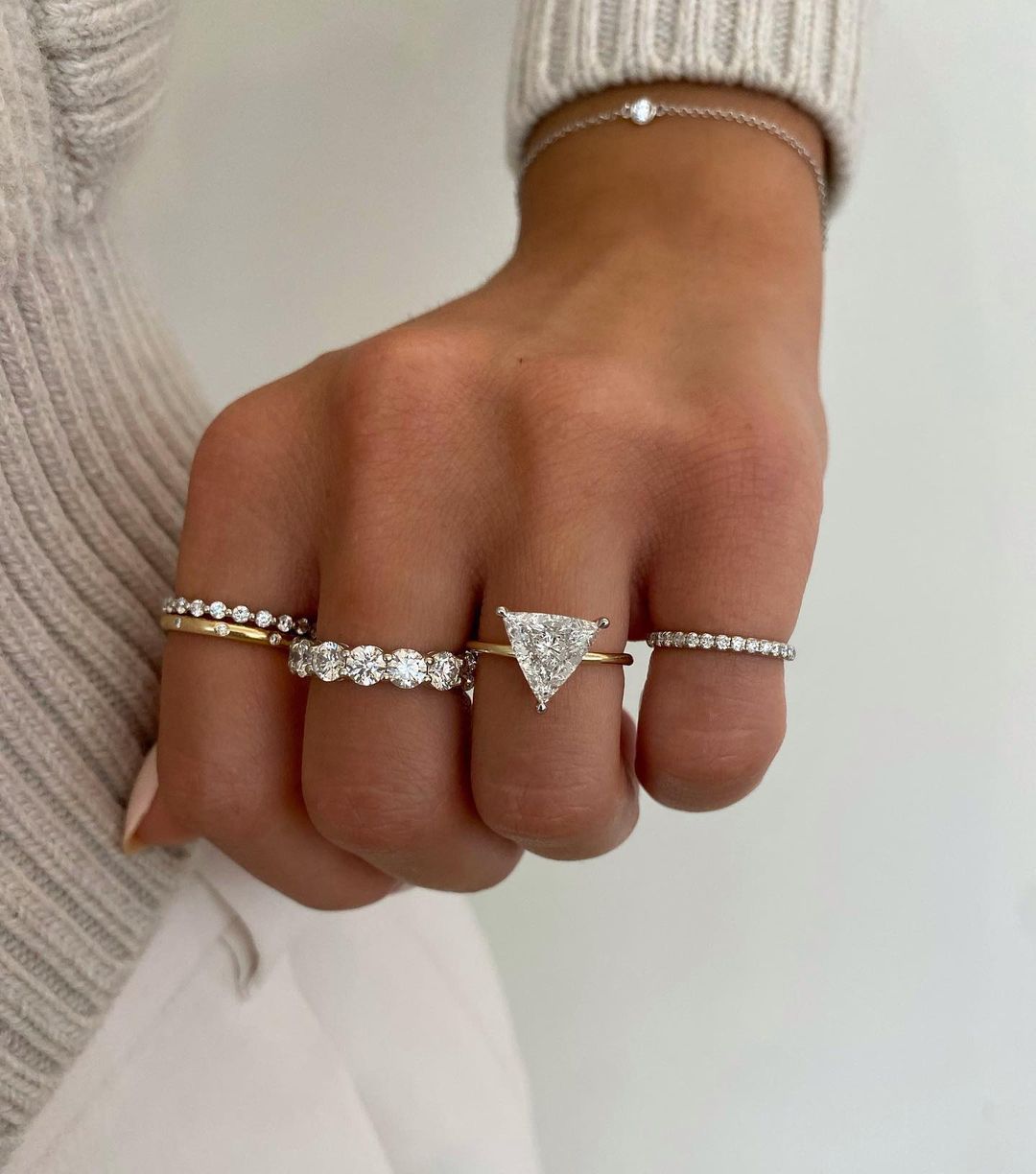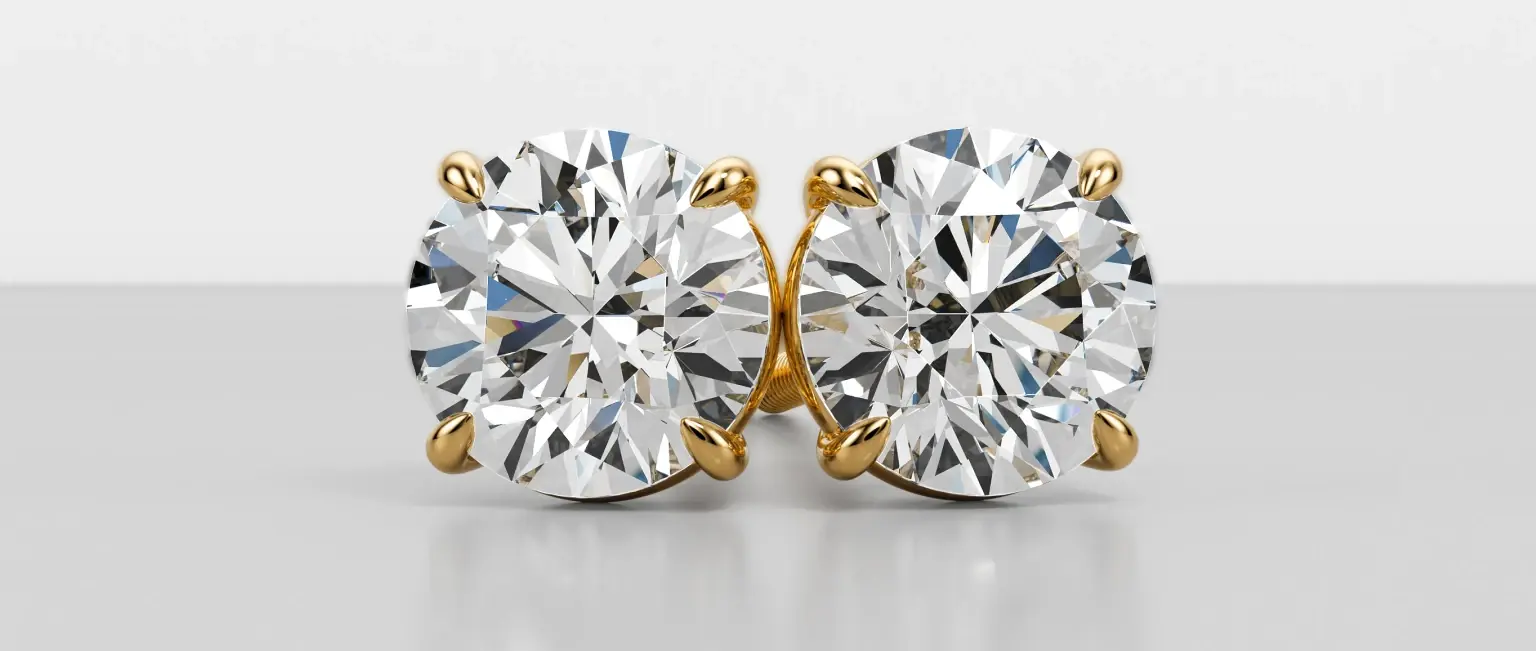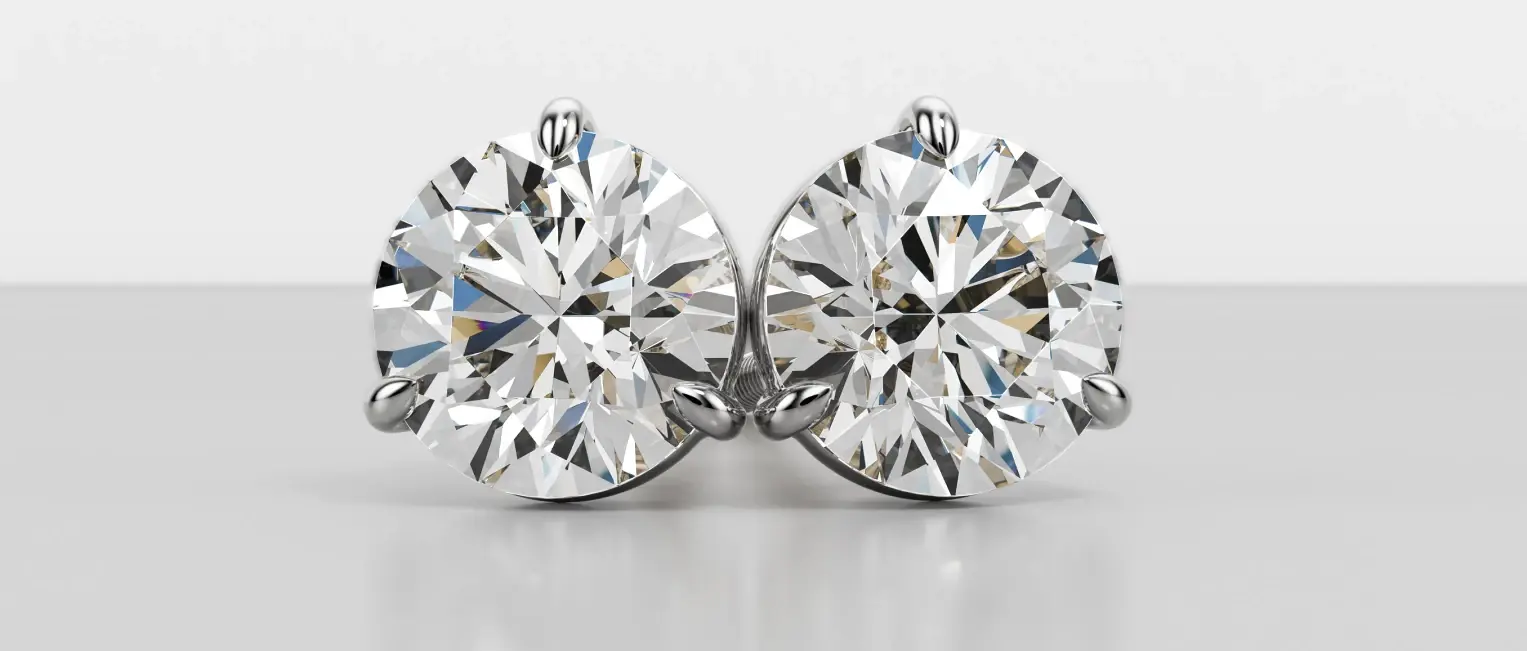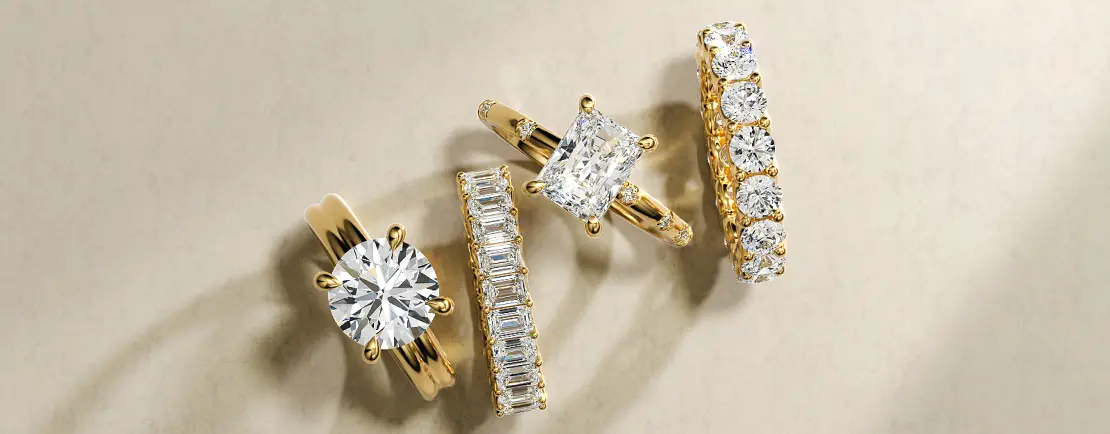Trilliant diamonds provide an alluring and rare alternative to your traditionally cut fine gemstone. Today’s trilliant was first produced in the 1960s by a renowned New York diamond merchant by the name of Leon Finker. It wasn’t until the early 1970s that the design known as “Treille” was patented by his son, Marvin Finker.

The words “triangle” and “brilliant” were combined by later diamond dealers to rename this particular gem. This is because of the obvious triangular shape in which these diamonds were cut with three pointed corners and straight or rounded sides like a triangle. You may have also heard trilliant diamonds go by the names of trillion-cut, or triangle diamonds.
Most diamond shapes are used as center stones in engagement rings, which is unlike the trilliant, which is more often used for solitaires or side-stone accents. If you’re lucky, you will be able to find engagement rings that feature a trillion-cut diamond as the center of attention.
Simply put, a facet is the number of smooth surfaces on a gemstone cut by machine or by hand to create either flat or curved faces. These surfaces are arranged in a geometrical pattern around the gem. A diamond’s facets can create those charming optical effects and sparkles as the light collaborates with each facet.
Trilliant diamonds are cut with between 31 and 50 facets depending on their place on the jewelry. For example, a center stone will be cut with more facets and contain a convex shape to give the illusion of a bigger size. A side accent will generally be cut into 31 facets without convex edges so as to not take away from the main gem.
Since the distribution of a diamond’s weight is focused more horizontally, always check the depth of a trilliant diamond. Trilliant diamonds are shallower than many others, and with the elaborate placement of their facets, they give the illusion that they weigh more than they truly do. Another aspect of this lack of depth is the amount of meticulousness and perfectionism that goes into creating this diamond. Since the trilliant is shorter, the most minuscule flaws can be seen from a close look.
Since the trillion-cut diamond seems larger than it truly is, it will look more expensive than you will need to pay. They can be the same carat as a traditional round or princess cut diamond and still look larger with the added inclusions of color. In the same regard, they can generally cost much less than the highly demanded round shape diamond, so if you’re looking to stand out, you’ll be taking the inexpensive route of searching for a trillion-cut diamond.
This is especially the case since trilliant diamonds, much like any other diamond, are priced solely from the carat, brilliance, and quality of the cut. This means the price of your trillion-cut diamond will ultimately come down to where it is placed in the jewelry and how large it must be to make its appearance worth your while. The heavier the rock, the more it will cost you.
Since trilliant diamonds are more commonly seen as side arrangements in jewelry, they are considered to be quite rare as center diamonds. Several years ago, trilliant diamonds were considered the 12th most popular cut out of 12 diamond shapes tested. That put trillion-cut diamonds in last place among diamond shapes for center stones in jewelry. Since then, trilliant diamonds have grown more famous as the renewed vision in their modernistic and classic radiance.
Since these diamonds are so rarely seen as center gems, you will benefit from finding this rare occurrence in your engagement rings, earrings, or necklaces. You can stand out from the crowd with your stunning triangular edges and angles.
In the conquest of trillion diamonds, you just have to look for the gems that appeal the most to you and look the best from your perspective. When you’re able to see your diamond in person and firsthand, how will you test its quality?
Brilliant cut diamonds like the trilliant consist of particularly shaped facets that start at the center of the gem and then spread outwards. This type of characteristic will hide those little bits of material trapped inside the diamond called inclusions. The best way to look for these inclusions, or lack thereof, is by checking the clarity grade.
Color should be another interest. The Gemological Institute of America (GIA) declares that the most highly valued diamonds are those that are white or otherwise colorless and fall into a specific range of hues. This is because those diamonds that appear to be more faintly yellow or brown are the diamonds that have nitrogen impurities within. On the other hand, certain diamonds that were meant to be colored can increase their value depending on which part of the spectrum they fall under and are sometimes considered to be “fancy” color diamonds.
The symmetry of your trillion-cut refers to the exact nature of the sizes between each of the sides of your diamond. Trilliant should be equilateral triangles, so each side and angle are equal in size, shape, and length. More commonly than not, trilliants have sharper corners, but some diamonds have the corners cut off to provide easier use and prevent cracking and breaking. When the corners are cut in this manner, the overall shape and look of the diamond will be a little different.
Sometimes trilliant diamonds come with sides that are perfectly straight, and other times the sides are more rounded. Rounded sides provide an essence of beauty seen more in centered gems, while straightened edges are noticed more as side accents, so a stronger, more geometric feeling is prevalent.
As we mentioned earlier, trillion-cut diamonds tend to be more shallow than other cuts and shapes. In this case, check the L/W ratio, which stands for the “length-to-width” ratio. This is a ratio used to determine how properly the patterns are cut for the diamond.
Looking for a trilliant diamond? Our gemologists would be happy to help you to find one.


























